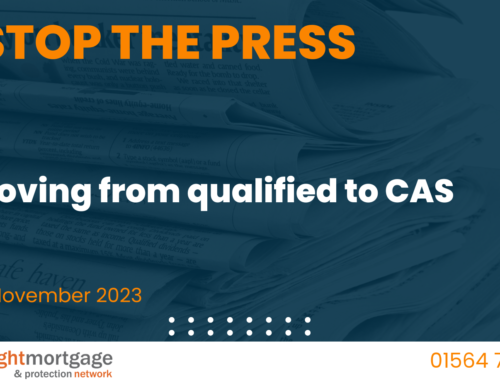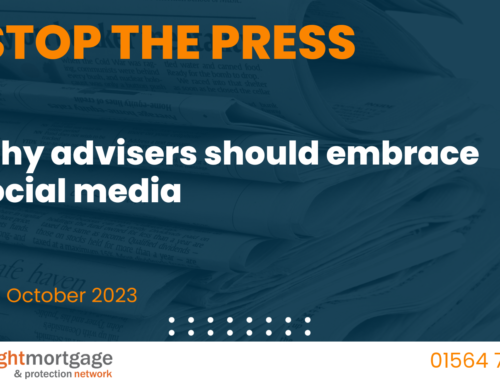How will 2016’s political upheaval impact you in 2017?
2016 was a year of drama as Brexit and the Trump election rolled across our screens like a surreal soap opera. It can be difficult to discern how these developments will ultimately affect our customers’ lives but, by virtue of the uncertainty, we can be sure that many will seek advice during the coming months.
There are many unknowns but we can make some educated guesses based on the dynamics at play. With this in mind, here are three areas where I think the extraordinary events of 2016 will impact the life of a broker in 2017.
The economy & interest rates
Whilst the risk of inflation has not been uppermost in the minds of British central bankers since 2007, the precipitate fall in the value of Sterling since July reignited concerns that more expensive imports would start to drive prices upwards during 2017.
Interest rates are, of course, the Bank of England’s traditional mechanism for the control of inflation and analysts gloomily contemplated a stagflation scenario which would force policymakers towards a round of destructive interest rate increases. Whilst the risk of imported inflation still exists, Sterling has now rallied by about 10% from its lows. Sterling was probably overvalued pre-July and it is also worth remembering that a fall in the value of our currency makes us more competitive and should, in moderation, actually drive economic growth.
The great threat to prosperity over the course of the next decade is not inflation, it’s protectionism. Looking ahead, if the French and German elections demonstrate support for right wing populism and we see EU-sceptic governments taking power across Europe we could see a weaker Euro and stronger Sterling.
Our central case is that UK interest rates will not rise in 2017 and probably not in 2018, despite rising interest rates in the US. And this brings us neatly on to the situation across the Atlantic.
American Presidential power tends to be over-estimated in Europe. Whilst Trump may believe in an aggressive reflationary strategy with lower taxes and higher government spending, it seems to me wholly implausible that he will persuade a Republican Congress to embrace the idea of the ballooning fiscal deficit which his policies would inevitably imply. If he were to succeed (and I don’t believe he will), the Fed would stand ready to raise interest rates. This would drive the value of the dollar up even further (it rose strongly when Trump won the election) and make it even more challenging for the US to compete internationally. Trump would say he doesn’t care – his thesis is built on rising American prosperity fuelling domestic consumption at the expense of foreign economies.
Trump wants more American dollars spent on domestic products and services – Americans making more stuff at home and selling it to Americans. He has already preparing to unwind the Obama legacy of free trade, in the Pacific basin, the Americas and Europe. This is bad news for emerging economies and probably for Europe but it may still be a net positive for the UK, if we play our cards right.
House prices
Despite its promises, the UK Government response to housing shortages is anaemic. The Autumn Statement was yet another missed opportunity – there is no meaningful plan to tackle the housing crisis. What we don’t need is more support schemes like Help to Buy – they treat the symptoms of supply shortages but actually perpetuate rising house prices in the long term.
What is really needed is a radical programme of housebuilding, that sweeps aside the vested interests which oppose it, in areas where the demand is most pressing. This plan may arrive with the housing white paper promised by the Chancellor, but don’t hold your breath. Our central case is that the structural shortage of housing in the UK will continue to underpin house prices for the next ten years, at least.
But it’s not all upside. There are (at least) two headwinds to consider in the context of UK housing. First of all, residential property is less affordable than ever, particularly in the South. And as George Osborne successfully skewered the buy to let market during 2016, landlords will not be the source of net demand during 2017.
Second, the uncertainty created by Brexit may mean that buyers defer a decision to trade in or up. RICS predicts modest house price inflation off low turnover, which is very bad news for estate agents. Listed estate agents, notably Countrywide, have already seen their stock prices fall heavily as the market considers this prospect.
We do also think there is some ongoing downward pressure in parts of the London market, where Brexit, hostile property taxes and too much upcoming supply are conspiring to arrest the boom of the last 20 years. Admittedly, a weaker pound is a positive for London as an international destination but this currency weakness may not last for long.
The UK government will also be proactive in seeking foreign investment with the introduction of the lowest corporation tax in the G20, and any relaxation in financial regulation could offset fears about major banking institutions relocating to mainland Europe.
Client demand
BBA mortgage approvals data came in above consensus with an increase to 40,900 for October from an upwardly-revised 38,700 the previous month. This is the strongest figure for four months, and suggests the market is more resilient than expected.
There is no doubt, however, that the increasing tax burden on buy to let investors is shrinking the market. It has also driven a tightening in lending criteria which will reduce leverage. The future for buy to let remains broadly positive but there will be consolidation – some small investors will get out, larger investors will get bigger and more sophisticated.
I also can’t see any reason for a significant increase in remortgage business until rates start to move up and any growth in the owner occupier segment will be balanced by contraction in buy to let so it looks like being a flat year in terms of market growth.
But within this there will be niches of opportunity for those brokers who are prepared to look at different solutions for their clients. Buy to let landlords will want to find new ways to increase leverage. In theory we should also expect to see continued growth in second charge loans as people choose to improve their property without losing the benefit of low legacy rates but the intermediary market is proving surprisingly slow in embracing seconds as another weapon in their armoury.
2017 will present its own unique cocktail of threats and opportunities – the winners in 2017 will recognise that tomorrow’s challenges cannot be solved by yesterday’s solutions.





